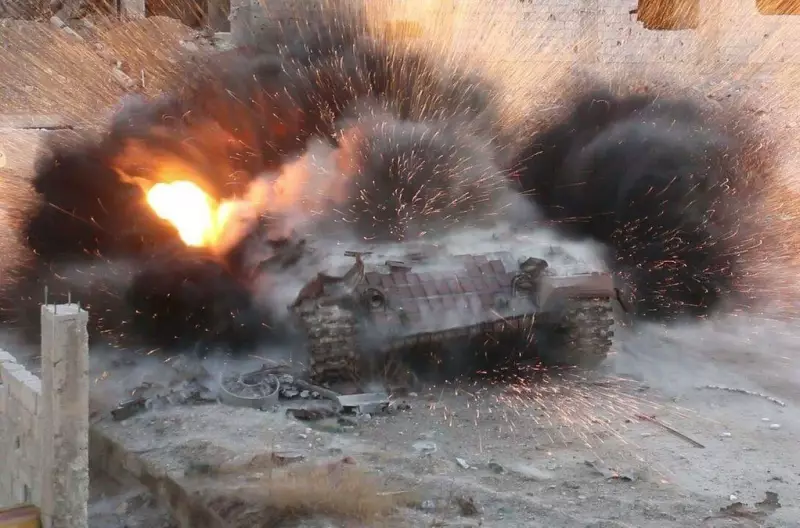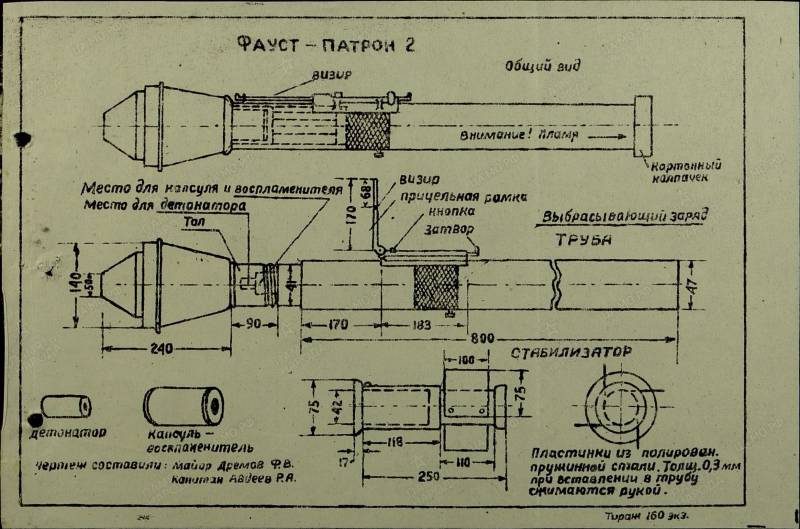First in the world. Techniques for disrupting the cumulative jet

Up to 10 kilometers per second
The cumulative jet is a terrible thing. The speed is about ten kilometers per second and the steel, behaving like a liquid, penetrates the armor several calibers of the attacking ammunition thick.
Until now, among those interested in armored vehicles there is no consensus regarding the mechanism of action of the cumulative jet. Simply put, does it flush or does it burn through?
Let us turn to the researchers of the Moscow State Technical University. N. E. Bauman, who described the mechanics of the cumulative jet when it encounters armor. A bit abstruse, but completely exhaustive. In the book by V. A. Odintsov, S. V. Ladov and D. P. Levin “Weapon and weapons systems" the following wording is given:
As a result, the cumulative jet turns around, its material spreads in the direction opposite to its velocity.
The barrier material also “leaves” the high-pressure zone, and part of it is carried along with the jet to the free surface, while the other part moves in the radial direction due to plastic deformation.
Thus, a crater is formed (for barriers of semi-infinite thickness, not pierced through) or a hole (for barriers of finite thickness, pierced through), the diameter of which significantly exceeds the diameter of the cumulative jet.

One of the most unpleasant opponents of the Red Army. Source: pamyat-naroda-ru.ru
In theory, cumulative ammunition has no equal on the battlefield. It is not surprising that for the first time people thought about protection against a deadly jet during the Second World War. Sergey Smolensky, chief engineer of the Armored Institute, also known as TsNII-48, tested the simplest systems for disrupting a cumulative jet with an explosion back in 1944.
The old principle came into play - "a wedge is knocked out with a wedge." Unfortunately, the most important experimental work for the country's defense turned out to be unclaimed. As the legend goes, lieutenant general tank troops Hamazasp Babajanyan did not allow this idea to develop to serial implementation with the famous expression:
As a result, the German (according to other sources - Norwegian) Manfred Held in 1970 issued a patent for the dynamic protection of tanks, and it first appeared in serial execution among the Israelis in the early 80s. Despite Israel's formal leadership, there is some reason to believe that foreign developments were based on early Soviet experience. For example, the dynamic protection of the Israeli tank M48A3 was called Blazer, just by the name of one of the manufacturers of the Soviet DZ model in Chelyabinsk Blazer G. A. As they write in the work “Dynamic protection. The Israeli shield was forged in ... the USSR? Tarasenko A. A. and Chobitok V. V. “According to available information, comrade. Blazer in the 1970s immigrated to Israel. Can this be considered evidence of borrowing by the Israelis of the Soviet experience - a rhetorical question? It is also difficult to understand how the secret carrier managed to leave the Soviet Union in the 70s? Be that as it may, in the USSR they began to test the first samples of protection against a cumulative jet "in metal" back in the early 60s, and the T-64BV with "Contact" was adopted fifteen years later.
Estimate the time period from the first experiments in 1944 to adoption in 1985. Now it is customary to criticize the Russian defense industry for really being slow to introduce innovations in the army. In the Soviet Union, too, not everything went smoothly, and the example of dynamic protection is a clear confirmation of this.
After a short digression, let's return to the origins of design ideas about dynamic protection at the end of the 40s. In 1949, in the secret collection "Proceedings of TsNII-48", the first article of its kind "On the possibility of using explosive energy to destroy the KSP" was published. The authors are Ilya Bytensky and Pavel Timofeev. But it was only the quintessence of many years of work of the Armor Institute.
Much more interesting and informative is the recently declassified technical report “Refining the optimal options for protecting the hulls and turrets of tanks and SU from being hit by cumulative projectiles and grenades” (Topic BT-3-48). The material dates back to 1948, that is, it managed to absorb at least four years of experience of Soviet engineers on the problem of protecting tanks from a cumulative jet.
Subject BT-3-48
TsNII-48 engineers chose substances with a large supply of internal energy as the basis for the so-called active method of protection against cumulative ammunition. So in a scientific way you can call explosives. The idea came, apparently, from previous experiments with shielded armor protection, which caused the cumulative ammunition to fire prematurely, which somewhat reduced its effectiveness. Since the cumulative jet often requires laboratory conditions for work, it is necessary in any way to prevent the ammunition from doing its dirty work.
The engineers suggested that this could be done in two ways. The first is to use explosives to disrupt an already formed cumulative jet. The second and more difficult is to arrange an explosion to prevent the correct formation of a cumulative jet or its breakdown at the time of formation.
In the first case, as indicated in the report,
In the second case, the engineers assumed that
As time has shown, the second approach did not justify itself - it is almost impossible to undermine the projectile at a strictly defined distance from the armor. It is easier to destroy it with an active defense complex. Nevertheless, at the end of the 40s, the utopian nature of a synchronized countercharge had yet to be experimentally proven.
Therefore, the main work was organized around a countercharge without a synchronizer. Engineers reasoned that it was easier and more efficient to upset the cumulative jet with the same explosive that caused the formation of this very jet. An alloy was prepared from TNT and RDX in the ratio of one to one TG-50/50. This explosive had the main thing that a countercharge needed - a high detonation velocity.
The question remained - will the cumulative jet cause a guaranteed detonation of the countercharge, or will it simply pierce it like a chalk checker? Recall that high-speed shooting, capable of solving the problem once and for all, did not exist at that time. For this, three experimental installations were built at once.
Second. A cumulative jet was directed onto a lead column with a steel plate - compression of the column was observed. Then a countercharge was placed between the shaped charge and the column. After the explosion in this case, the column was completely destroyed. This suggests that the column was affected not only by the cumulative jet, but also by the detonation products of the countercharge.
Third setting. During the detonation of a charge composed of separate charges with air gaps, it was found that the charge completely detonates from the primary charge.
Agree, the experiments of the TsNII-48 engineers are not without elegance, especially with a lead column.
The next problem facing the researchers was the question of the timely detonation of the countercharge. That is, does he manage to upset the cumulative jet, or will it first pass through, and then the explosive detonates. A non-trivial problem, it should be noted.
For this, two cumulative blanks were prepared - one large weighing 520 grams, but without a metal shell of the notch, and the second weighing 25 grams, but with a metal shell of a cumulative cone. Interestingly, in the course of preliminary research at the institute, it was found out that the form of the countercharge does not really matter. We settled on cylindrical products with a flat end. The prototype of the future dynamic protection in model experiments was placed either at some distance from the protected armor, or directly on it.
The results of the experimental explosions were very encouraging. If we simplify it completely, then without a countercharge (that is, without a remote sensing gun), the cumulative jet penetrated the armor by 19 mm. The weight of the shaped charge in this case was 520 grams, the diameter was 100 mm. As soon as explosives were installed in the path of the jet, the depth of the “gulp” decreased to 3–12 mm, depending on the mass of the countercharge.
For greater reliability, the engineers proposed an alternative protection in the form of inert substances - alabaster, chalk, wood and plexiglass. As expected, they could not effectively weaken the action of the cumulative jet. In TsNII-48, they noticed one important feature - the closer the countercharge is to the cumulative recess and the farther from the armor, the more effectively it upsets the destructive effect of the ammunition.
For example, if, all other things being equal, the countercharge is placed 20 mm from the armor, but close to the shaped charge, then the penetration depth will be 4,7 mm, and if the countercharge is placed on the armor at a distance of 40 mm from the ammunition, then the jet will penetrate the armor already at 9,6 mm. At the same time, the distance between the armor and the shaped charge is unchanged, only the placement of the remote sensing prototype varies.
Research results of Soviet engineers in 1947–1948. really encouraging, but there were still tests of the prototype of dynamic protection with a detonation synchronizer ahead.
Information